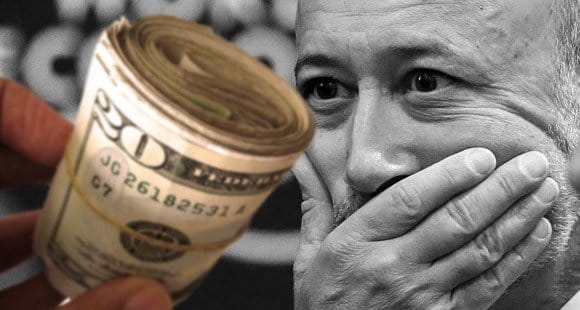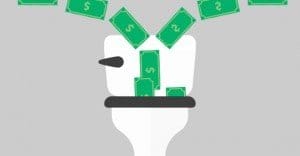Is it Possible to Make Money by Buying Traffic?

Follow this chain of thought for a moment. You want to make money from your website. To do so, you need to bring in traffic. You have a budget, so you consider buying traffic. The question is, how likely is it that you’ll make money with that traffic? You don’t want to spend more money than you make from the traffic you get. You also don’t want to miss an opportunity to turn a $2 investment into $100 in conversions.
Types of Traffic
The first thing to know is that there are essentially three types of traffic you can buy. They range in quality and cost, on a linear scale.
On the low end of both cost and quality, you have bot traffic. Bot traffic is traffic that comes directly from software, with little or no human interaction. It’s incredibly cheap, mostly because it’s generally ineffective. Bots have certain distinct characteristics, which an experienced user can see in their analytics. More importantly, ad affiliates – any site that pays by the impression, rather than by the conversion – recognize and know how to detect bot swarms. That’s not to say bots are completely useless; they’re just a black hat technique with little in the way of redeeming factors.
Also on the low end, but slightly higher in both price and quality, is the clickfarm style of traffic. A clickfarm is typically a group of real humans in a developing nation, such as Egypt, Bangladesh or Pakistan. These users are paid to click around a target site, imitating what a real human user would do. They’re harder to detect, because they’re actually human; they don’t have the same signs a bot swarm exhibits. On the other hand, they’re potentially easy to detect simply by using geolocation. A flood of traffic from India is going to exhibit the qualities of a clickfarm in virtually every occasion, unless you were intentionally targeting India and selling to that audience.
On the high end of both quality and price is legitimate traffic. Buying legitimate traffic is just another way of saying you’re running advertising campaigns. After all, that’s what Pay Per Click means, isn’t it? You’re paying for traffic, through legitimate sources, from legitimate people.
Making Money with Bots
In the world of buying traffic, you largely get what you pay for. However, it’s always a mix of traffic, even with the best high-cost PPC campaigns. Think of it like a sliding scale; the more you pay, the more bot traffic is filtered from the traffic you receive.
The idea of making money from bots is not new; in fact, it’s been put to use almost since the idea of paid advertising began. Even as recently as a year ago, large stories have been published about making money with bot traffic.
What you do is set up a website or network of websites. You run advertisements that pay you per impression, generally in the fractions of a penny per view or thousand views. You don’t earn much with these ads; growing your traffic slowly and organically over time would earn you a handful of dollars per year at best. The goal here is to select ad affiliates that are willing to look the other way or consider their payouts too low to bother filtering bot traffic.
Once you have these affiliates set up, you purchase the ultimate low-cost traffic you can find. If you earn two cents per thousand views, you want to be paying less than two cents for a thousand views. The ad affiliates gain nothing, but they pay you a pittance. You pay less than a pittance, and you make money in one way; sheer, absolute volume.
Of course, this is a solidly black-hat technique. The people selling you traffic will never acknowledge that their traffic is bots; they will simply say they can’t guarantee the quality of the traffic. The ad affiliates, if they ever look and audit your traffic, will very likely shut you down due to sheer violation of their terms of service. It is, in every sense of the word, fraud.
Making Money with Clickfarms
Clickfarms work in more or less the same way. The bot traffic you receive when paying for cheap traffic is engineered to look as human as possible, but there are still telltale signs, such as all traffic coming from the same browser with the same user agent. Human traffic, from clickfarms, can vary that with little additional cost.
The problem with clickfarm traffic is the IP range. Most clickfarms don’t bother to hide their IP addresses through proxies, so all of your traffic comes through Bangladesh or other middle eastern IP addresses. It’s easy to track and block, and advertisers often do just that.
Otherwise, making money with clickfarms is exactly the same. It’s still essentially fraud, and it’s still fraught with pitfalls. The thing you need to realize is that by making money with a black hat technique like this, you need to go all-in. You cannot mix clickfarm or bot traffic with organic traffic and hope it balances out. Buying clickfarm traffic for your legitimate website is a great way to absolutely tank its search ranking and ruin any organic SEO you’ve built.
Making Money with Ad Traffic
Buying traffic legitimately is possible, it just requires a bit more work, which of course means it’s more expensive. When you buy traffic through a third party service, what you’re generally doing is outsourcing an ad campaign. It’s just like PPC through Google AdSense or Facebook Ads, you just aren’t doing all of the work yourself.
To start, you set up a webpage and begin to populate it with legitimate content. Legitimate is the key here; you want to avoid scraped content or duplication from other sites. What you’re doing is building an organic audience.
You can monetize your website with ad affiliates, and you can even work with Google and other high-profile ad partners because you aren’t pulling in primarily bots. Your traffic is legitimate, so you can use high value ads.
Alternatively, you can monetize by selling premium memberships, ebooks, software or actual products. You are, at this point, running a web store. Buying traffic, whether through Facebook ads, Google PPC or a third party, brings in natural, real traffic. These real people are attracted by real targeted ads, and they stick around to read, click more ads or convert into paying customers.
So, can you make money by buying traffic? Of course. Buying traffic and coming out with a positive ROI is a time-honored tradition in web business. It makes no difference whether you’re contracting a third party to run your ads or you’re doing the work yourself to optimize them; as long as you turn a profit, you’re making money by buying traffic.
 ContentPowered.com
ContentPowered.com







What can you do if the traffic you bought that you thought was legitimate got you banned?
Which ad network were you banned from, and what was the traffic source? Sorry to hear this happened. Usually you’ll only get banned from ad networks if the traffic you bought are bots that are artifically clicking your ads. I’d definitely avoid that traffic source in the future.